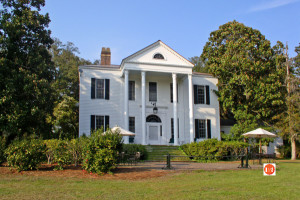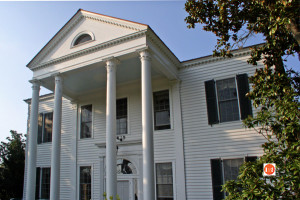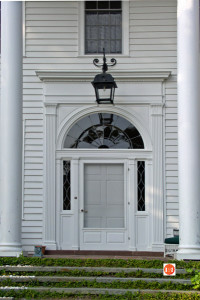Friendfield Road off of #521
City Directories and History: Friendfield Plantation is a 3,305-acre property that includes buildings, structures, roadways, woodlands, ricefield systems and sites associated with the continuing use of the land from ca. 1750 until 1946. These features illustrate its conversion from a rice plantation to a winter hunting resort into the World War II era, when Friendfield’s owners achieved a permanent balance between
recreational use and sustained-yield forestry. The property consists of parts of six antebellum rice plantations: Friendfield, Mount Pleasant, Midway, Canaan, Waterfield (Westfield) and Bonny Neck. The contributing architectural and cultural resources retain integrity of location, design, setting, materials and workmanship. Overall, the property contains 23 contributing buildings, 14 contributing sites, and 15 contributing structures. The outbuildings and landscaping at Friendfield House (ca. 1931), Mount Pleasant (Silver Hill) House (ca.1794) and outbuildings, and two staff residences are typical hunting plantation features.
The eighteenth century Mount Pleasant (Silver Hill) House and nineteenth century slave street are fine examples of antebellum residences on a Georgetown County rice plantation. There are also three cemeteries, several ruins with visible above-ground features, and a number of known or suspected settlement sites without above-ground elements. Five principal road systems run south toward settlement sites near the former rice fields, and are linked by two east-west systems. Engineered ricefield systems were assets to the use of the property for duck hunting. Since the 1930s, the plantation has been partitioned into four quail hunting courses, each of about 500 acres. Upland landscape patterns have served the needs of turpentine and tar makers, tenant farmers, and quail hunters. Listed in the National Register April 12, 1996. [Courtesy of the SC Dept. of Archives and History]
IMAGE GALLERY via photographer Bill Segars – 2006
“Alston, William Algernon, Jr., of “Marietta,” “Friendfield,” “Strawberry Hill,” “Calais,” and “Michaux” plantations and New York. Born ca. 1830 (S.C.?); died 1867. Church: Episcopalian. “A gentleman of leisure, weighing 300 pounds.” Slaves: 171 (Lower All Saints’ Parish, Georgetown District).”
“Forster, Dr. Alexius Mador of “Friendfield” plantation. Born Sept. 14, 1815 (S.C.); married Apr. 10, 1845, Elizabeth Hunt Warham; died July 29, 1879. Education: S.C. Medical College, M.D., 1840. Church: Episcopalian [(Vestryman, Prince George, Winyah postwar) ]. Public Service: Delegate to Secession Convention, 1860. Other: Member, Elliott Society of Natural History. Slaves: 272 (Prince George, Winyah, Parish, Georgetown District).”
The Last Foray, C. Gaston Davidson, SC Press – 1971
Stay Connected
Explore history, houses, and stories across S.C. Your membership provides you with updates on regional topics, information on historic research, preservation, and monthly feature articles. But remember R&R wants to hear from you and assist in preserving your own family genealogy and memorabilia.
Visit the Southern Queries – Forum to receive assistance in answering questions, discuss genealogy, and enjoy exploring preservation topics with other members. Also listed are several history and genealogical researchers for hire.
User comments welcome — post at the bottom of this page.
Please enjoy this structure and all those listed in Roots and Recall. But remember each is private property. So view them from a distance or from a public area such as the sidewalk or public road.
Do you have information to share and preserve? Family, school, church, or other older photos and stories are welcome. Send them digitally through the “Share Your Story” link, so they too might be posted on Roots and Recall.
Thanks!








